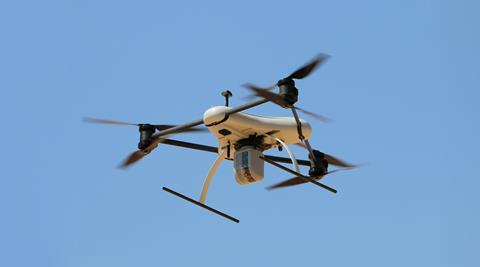Kampala, Uganda – A new study has shown that Alexapath, mobile digital devices, can rapidly assess pathological complications in remote areas, promising improved diagnostics in resource-limited settings.
The digital devices which employs mobile whole slide imaging (WSI) technology, producing high-quality images, allows for the differentiation between reactive changes, and cancers that begin in the cells of the immune system and those that spread from one part of the body to another.
Researchers in Uganda, Tanzania, and the University of Oxford, found that Alexapath’s simple technology can enhance access to diagnostic services and ultimately improve patient outcomes.

The researchers are Caroline Achola head of the Pathology Department, Ministry of Health, Uganda, but who conducted the study at St. Mary’s Hospital Lacor, Alex Mremi, Leah Mnango, and Ismail D Legason from Kilimanjaro Christian Medical University College, Daniel Mbwambo from Christian University, Moshi, Tanzania, Erick Magorosa of Muhimbili National Hospital, Dar es Salaam, Tanzania, Dimitris Vavoulis, Claire El Mouden, Anna Schuh from the university of Oxford.
In the study titled: Diagnostic validation of a portable whole slide imaging scanner for lymphoma diagnosis in resource-constrained setting: A cross-sectional study which has been published in the Journal of Pathology Informatics, the researchers acknowledged certain challenges that need to be addressed before the device could be widely implemented.
One such challenge involves the technical robustness of the device itself. The researchers noted that improvements are required to ensure its reliability and consistent performance.
Additionally, there is a need for enhanced software and hardware support to facilitate the sharing and storage of captured images.
The NIHR/Oxford University supported the cross-sectional study, specifically through grant number NIHR200133. However, the funders had no involvement in the study’s design, data collection, and analysis, publication decision, or manuscript preparation.
While further development is necessary, the findings indicate a promising future for Alexapath and its potential to revolutionize the field of pathology in remote areas with limited resources.

The Study:
The cross-sectional study was conducted across two African countries and three study sites. It showed that mobile Whole Slide Imaging (WSI) microscopy using the Alexapath device can provide accurate results comparable to conventional glass slide microscopy (GSM) in limited resource settings.
The study, which followed guidelines set by the College of American Pathologists (CAP), demonstrated that mobile WSI offers a non-inferior performance in diagnosing lymphoma, metastases, and benign conditions when compared to GSM.
The shortage of pathology services in low- and middle-income countries (LMICs) has been a significant obstacle in delivering effective cancer care.
In Tanzania, where only a handful of pathologists are available, the lack of pathology services in peripheral cancer centers often results in delays in diagnosis and increased mortality rates.
To address this issue, researchers explored the potential of affordable portable devices and technologies, such as whole slide imaging, to revolutionize pathology practice in resource-restricted settings where specialist pathologists are scarce.
The findings:
In the study, the overall agreement between GSM and mobile WSI for diagnostic categories such as lymphoma, metastases, and benign conditions was found to be 93%, 100%, and 86%, respectively.
These findings align with validation studies conducted for other digital pathology devices, both in resource-rich and resource-limited settings, which have demonstrated the feasibility and good quality of scanned images.
However, challenges such as scanner costs and internet speed limitations need to be addressed to ensure widespread implementation.
The study excluded 21 cases from the validation study due to poor quality or quantity in GSM, emphasizing the importance of optimal morphology quality in histopathological examination.
According to the study, factors affecting tissue section quality, including artifacts occurring during surgical removal, fixation, processing, staining, and mounting, require training and quality control practices.
According to CAP guidelines, validation of the entire WSI system should emulate the clinical environment and include a sufficient number of routine cases to assess diagnostic concordance between digitized and glass slides.
The researchers found that software and hardware support for imaging processing, sharing, and storage were not fully developed for the Alexapath device during the study.
The study found other critical factors for successful implementation which include running costs, data security, sustainable internet connectivity, user acceptance, and continuous training of pathologists in digital pathology principles and limitations. For more on this study, visit: https://doi.org/10.1016/j.jpi.2023.100188
About The Author
Arinaitwe Rugyendo
Rugyendo is the Founder and Editor-in-Chief of ResearchFinds News. He’s an accomplished journalist with a rich background in the media industry in Uganda. With over two decades of experience, Rugyendo has held various roles including cab reporter, Bureau Chief, Managing Editor, and Digital Media Editor at renowned publications such as Daily Monitor and Red Pepper. Throughout his career, he has demonstrated a commitment to delivering high-quality journalism and staying at the forefront of media trends. In addition to his journalistic pursuits, Rugyendo is currently pursuing a Ph.D. in Journalism and Communication at Makerere University. He has been recognized for his outstanding leadership and commitment to social change as a Desmond Tutu Fellow and Crans Montana New Leader. Rugyendo also serves as the Chairman of Young Engineers Uganda and Uganda Premier League, showcasing his dedication to promoting excellence and growth in various fields. With a passion for driving innovation and pushing boundaries in media, Rugyendo continues to make significant contributions to the industry. His vast experience, academic pursuits, and leadership roles make him a respected figure in the Ugandan media landscape.

















